In 1520, the great Titian Vecellio (Pieve di Cadore, c. 1490 - Venice, 1576) delivered to the merchant Alvise (or Luigi) Gozzi, originally from Ragusa but living in Ancona for work, his Madonna in Glory with Saints Francis and Blaise, later to go down in history as the Gozzi Altarpiece, named after its patron: Luigi Gozzi (also depicted in the painting, kneeling as he is presented to the Virgin by Saint Blaise) had invested part of his considerable wealth to decorate the church of San Francesco ad Alto, for which the altarpiece was intended. After the church was converted into a military hospital (today it is still the seat of the Military District of the Marche capital) in 1863, the altarpiece left the building and, in 1884, became part of the collection of the Pinacoteca Civica di Ancona.
This year, therefore, the Gozzi Altarpiece turns five hundred years old, and to celebrate its five-hundredth birthday the Municipality of Ancona has imagined several initiatives in order to enhance the masterpiece, which has been on permanent display at the Pinacoteca Civica “Francesco Podesti” since 1974 (since 1884, in fact, it has known other moves) and which represents one of the two testimonies of Titian’s art in Ancona (the other is the Crucifixion, painted in 1558 for the church of San Domenico and also kept in the Municipal Art Gallery). The anniversary also acted as a “fuse” for a valorization project involving all the civic museums of the capital of the Marche region, which participated, as the lead agency, in a regional call for proposals for the valorization of museum centers. Here, then, is the whole city, with the museums of the MIRA network, which brings together several entities (the civic museums, the National Archaeological Museum of the Marche, the Museo Tattile Statale Omero and the Diocesan Museum of Ancona), presenting a proposal for in-depth study on the Pala and beyond, in anticipation of being able to return to live visits to cultural venues as soon as the anti-Covid restrictive measures are eased.
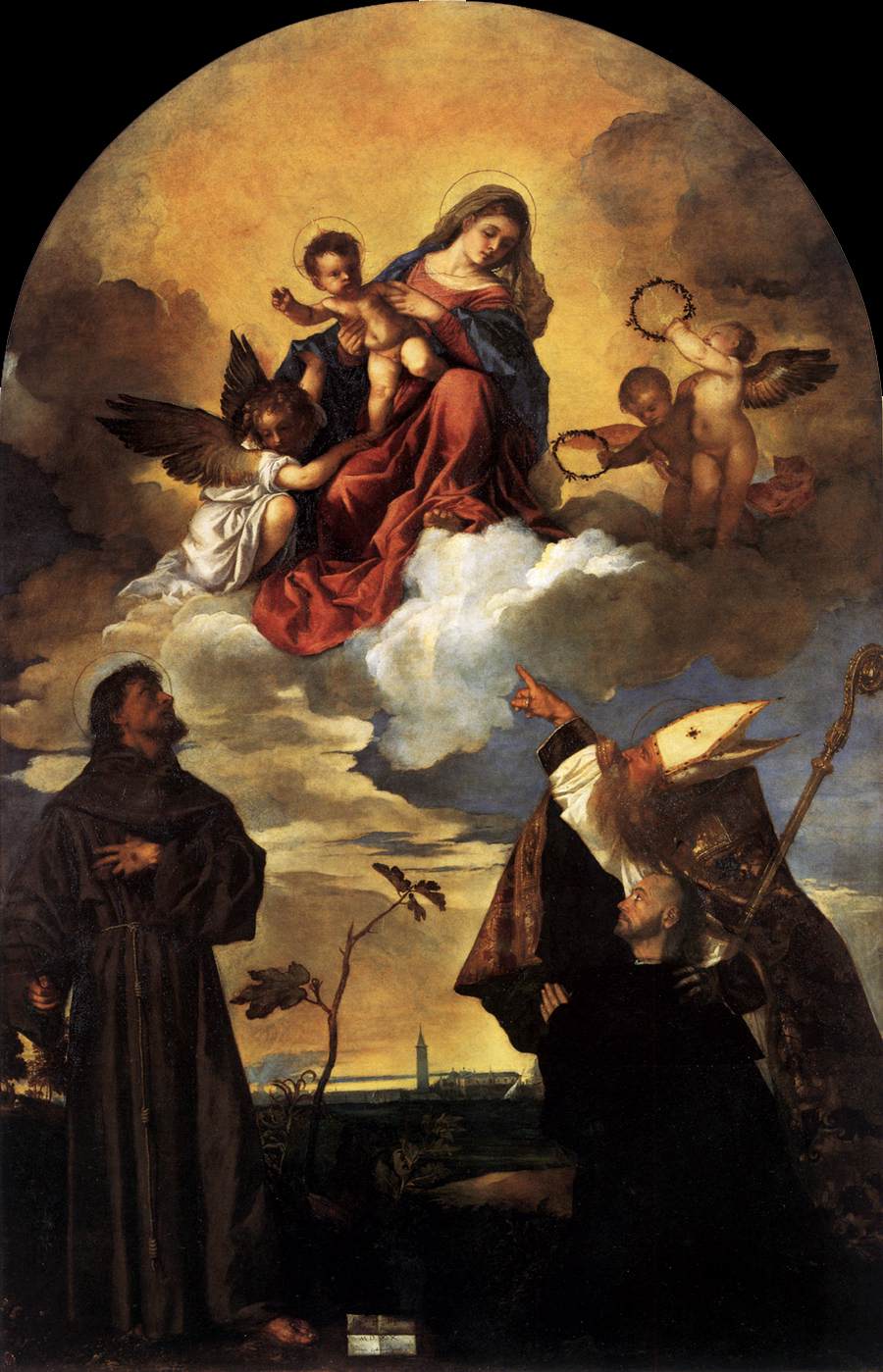 |
| Titian, Gozzi Alt arpiece (1520; oil on panel, 322 x 215 cm; Ancona, Pinacoteca Civica “Francesco Podesti”) |
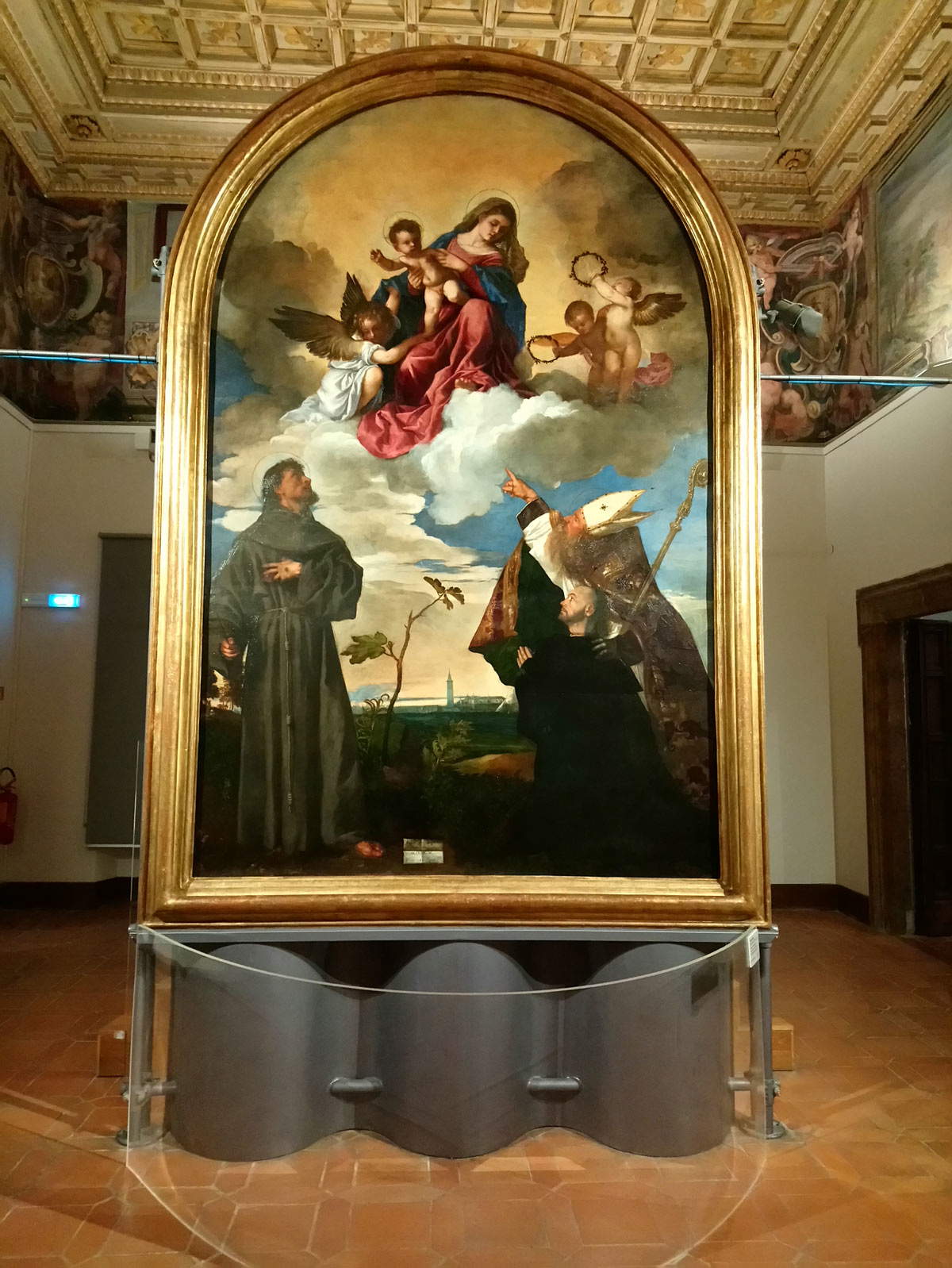 |
| The Gozzi Altarpiece at the Pinacoteca Podesti. Ph. Credit Finestre Sull’Arte |
The proposal focuses on several themes: for example, the centrality of Ancona in the economic and cultural exchanges that affected theAdriatic during the Renaissance will be reiterated (and the Gozzi Altarpiece is an evident witness of this significant role assumed by the Marche city), there will be focuses on Renaissance art, the relations between Ancona and the East, and more. There will also be no shortage of popular and enhancement initiatives on the Gozzi Altarpiece: the Cooperative Society "Le Macchine Celibi," a reality that has long been active in the museum field and which also works within the Podesti Art Gallery, has developed various contents aimed at different audiences (from adults to children, from enthusiasts to those who want to approach 16th-century art for the first time) on the Gozzi Altarpiece and, more generally, on Titian’s work, in collaboration with the staff of the other museums in the network. Among the proposals, also meetings with two experts who will comment on the altarpiece: art historian and well-known popularizer Stefano Zuffi, and restorer Carlo Giantomassi, a well-known name in international restoration, moreover from Ancona (in 1987 he dealt with the restoration of the Pala Gozzi).
The altarpiece then arrives throughout the city thanks to a set of projections that touch some of Ancona’s main monuments and promise to be scenic and impressive: the set-up was created by the City of Ancona in collaboration with the Distori Heritage Department of theUniversità Politecnica delle Marche and Stark, a company in the area that is a leader in the production of large events and multimedia systems (formerly a partner of Ferrari), and features the creative direction of visual designers Paolo and Alex Buroni, who will collaborate with Professor Paolo Cini of the Distori Department, who has long made reproductions and reliefs of the Podesti Art Gallery collection. Stark, on the other hand, provided technological collaboration: the company’s desire was to work to enhance one of the city’s masterpieces. The route, inaugurated last Dec. 18, unfolds along Piazza della Repubblica, Piazza del Plebiscito and Piazza del Senato, through a line that runs from the sea to the Duomo: details, images and ultra-high-resolution reproductions of the Gozzi Altarpiece are projected on the walls of the churches located on these squares (the Church of the Sacrament in Piazza della Repubblica, San Domenico in Piazza del Plebiscito and Santi Pellegrino e Teresa in Piazza del Senato). The projections remain on view until Jan. 17, at all three sites, from 4 to 10 p.m.
The projections are then joined by two cultural itineraries “Ancona between East, West and Lost Places” devised by the MIRA network: the first is called Ancona Porta d’Oriente (Ancona Gateway to the East ) and the second On the Trails of St. Francis at Alto. The first route starts at the Podesti Picture Gallery, housed, since 1973, in the Palazzo Bosdari building, where the Gozzi Altarpiece can be admired. The second stop is the Museo della Città, where the history of Ancona is recounted, and then we arrive at the Museo Diocesano di Ancona, in which we admire the ancient plutei, the cloth of St. Ciriaco, and the icons of the church of Sant’Anna dei Greci, all evidence of Ancona’s relations with the East. Finally, fourth stop at the Omero Tactile Museum, which preserves reproductions of several masterpieces of art history and is housed in the Mole Vanvitelliana (a starting point for seeing the port of Ancona), concluding the visit at the Archaeological Museum, where we delve into ancient routes from the Aegean to the Adriatic, trans-Adriatic relations in the Hellenistic age, archaeology in the Adriatic in the 1930s, and exchanges between Ancona and Zadar.
The second route, On the Trails of St. Francis in Alto, is an itinerary to trace the history of the church to which the Gozzi Altarpiece was destined. It starts again from the Pinacoteca Civica “Francesco Podesti” where, in addition to the Gozzi Altarpiece, other paintings once kept in the church, such as the splendid Madonna and Child by Carlo Crivelli, are preserved. In the City Museum, the second stop on the itinerary, a floor plan with a reproduction of the ancient facade is preserved. The itinerary then continues with a visit to the churches of St. Dominic and St. John the Baptist, arriving at the former complex of San Francesco ad Alto, which is now the headquarters of the Marche Army Military Command. Last stop at the Diocesan Museum where a copy of theEcstasy of Blessed Gabriele Ferretti by Carlo Crivelli, once in the church and now at the National Gallery in London, the same sarcophagus of Blessed Ferretti and other paintings telling the story of San Francesco ad Alto are kept.
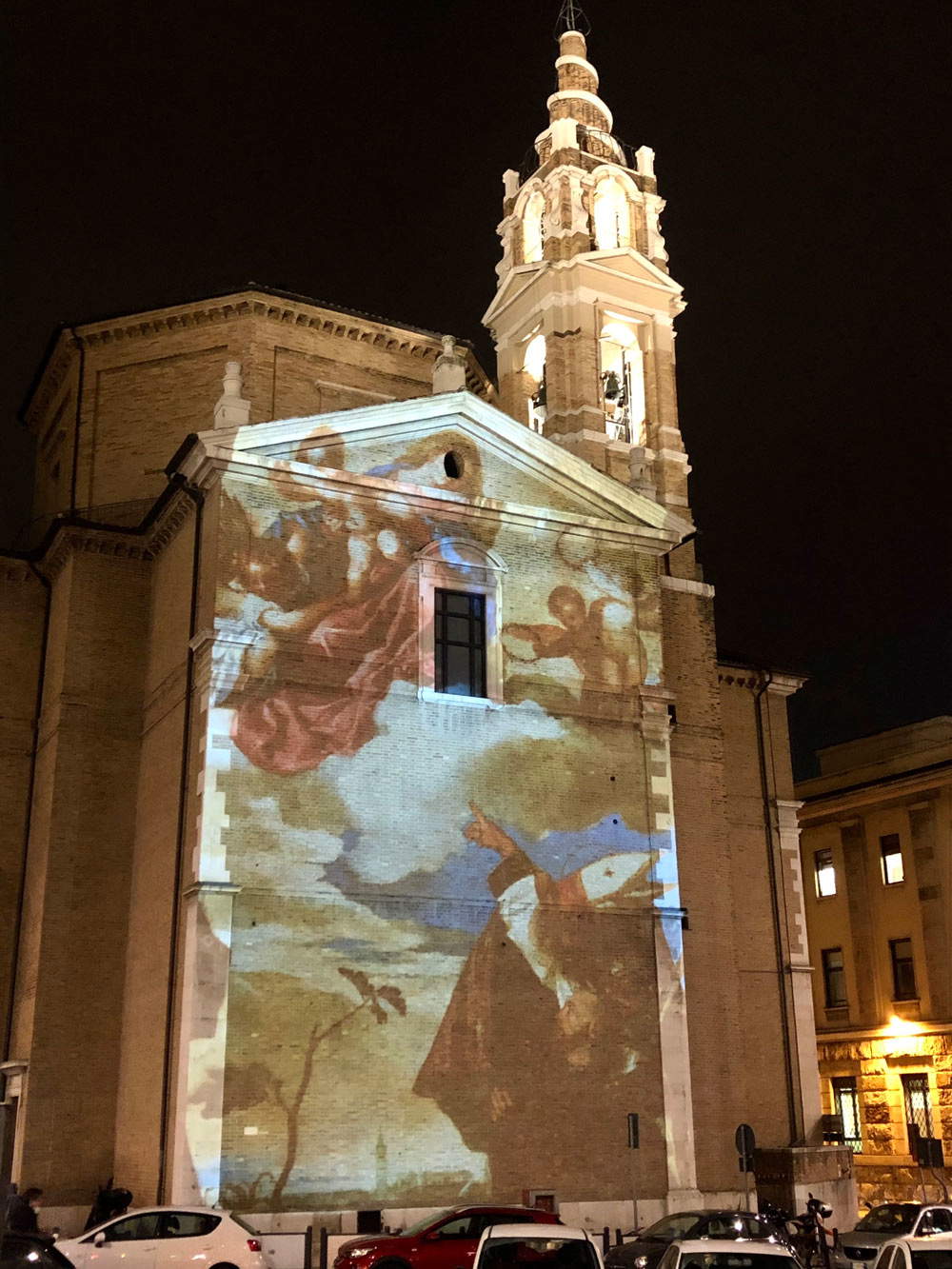 |
| Projection of the Gozzi Altarpiece on the facade of the Church of the Sacrament |
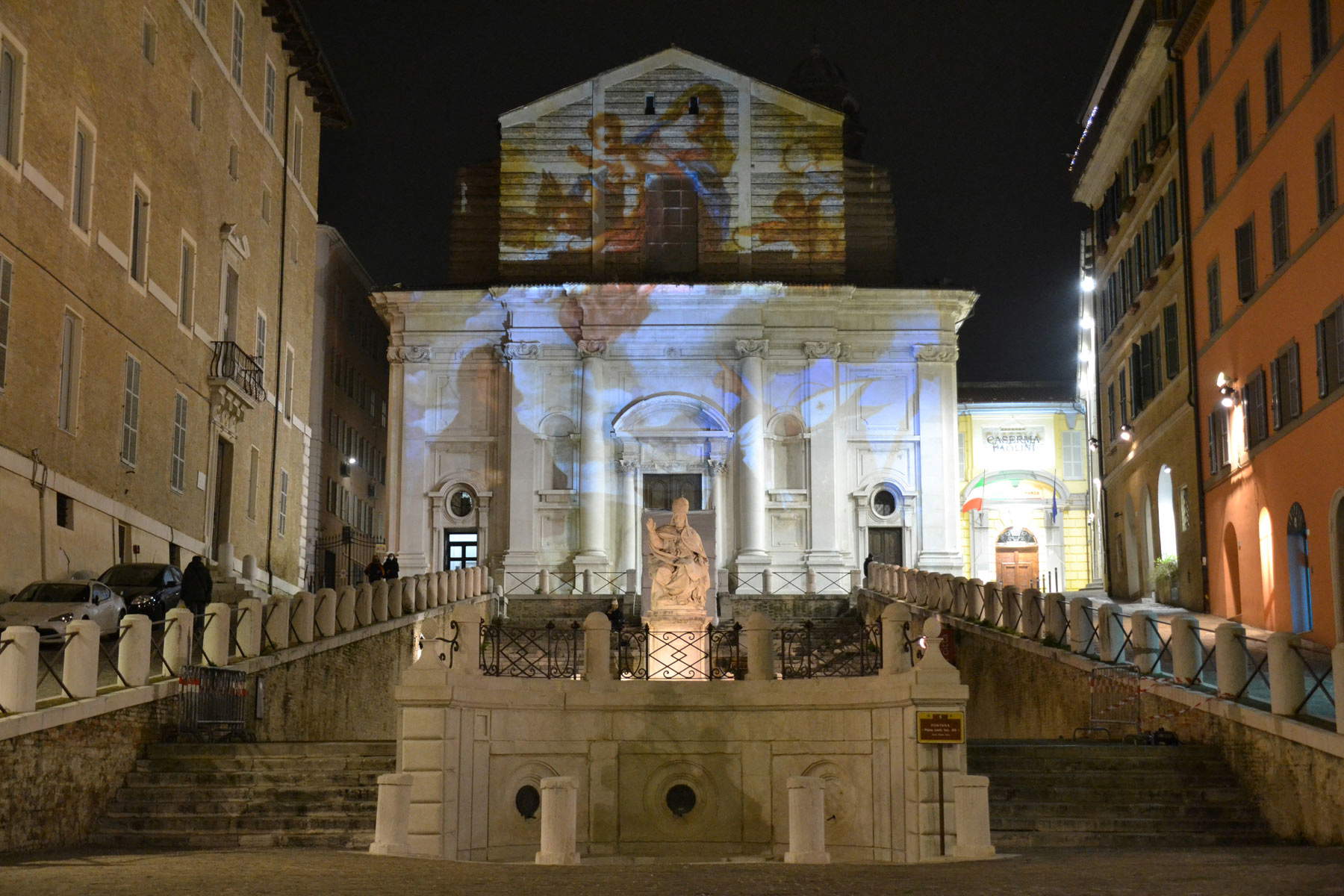 |
| Projection of the Gozzi Altarpiece on the facade of San Domenico |
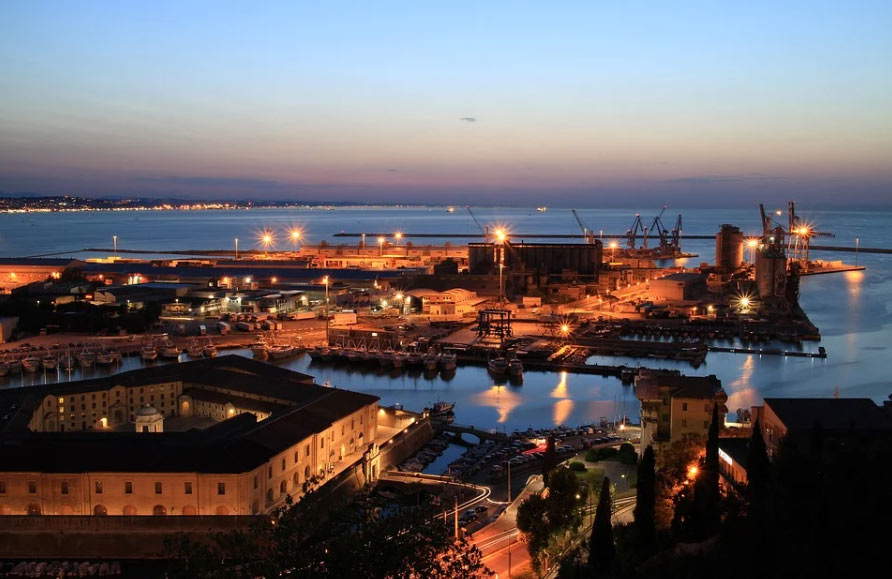 |
| Ancona, view of the Mole Vanvitelliana and the port |
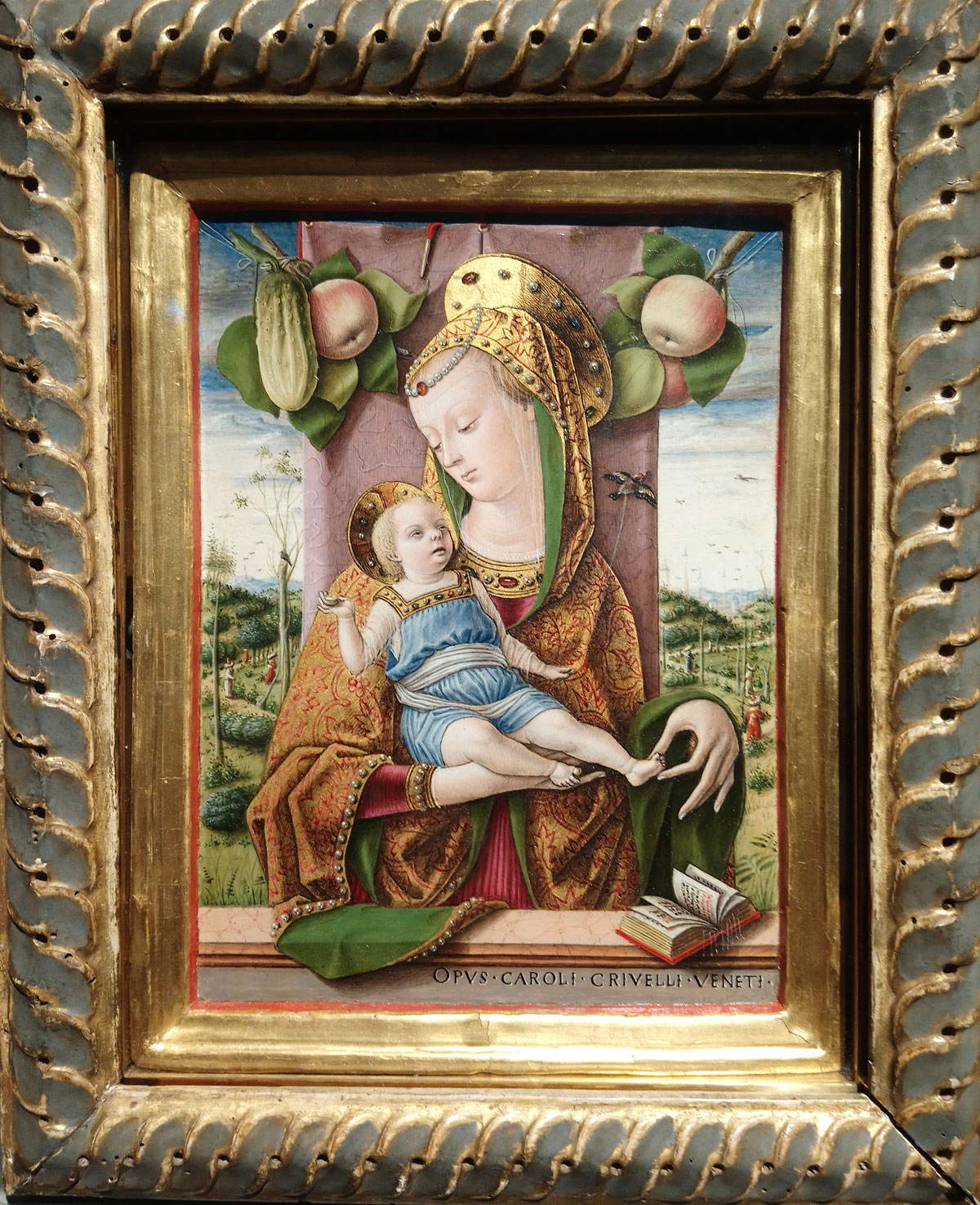 |
| Carlo Crivelli, Madonna and Child (c. 1480; tempera and gold on panel, 21 x 15 cm; Ancona, Pinacoteca Civica Francesco Podesti) |
“The Ancona Museums have never stood still, and they certainly do not intend to give up their celebration of the five hundredth anniversary of the Gozzi Altarpiece,” comments Ancona Mayor Valeria Mancinelli. “For this, new forms of relationship between the painting and the city, but also the rest of the country, have been found that are capable of bringing the work out of the Pinacoteca, making it available to the citizens in different forms, knowing and loving it better.”
“The altarpiece,” explains Culture Councillor Paolo Marasca, “is told both online and on the city walls. A new initiative, which crosses a very special Christmas like 2020. The painting is a pride for the city of Ancona, which guards it with great love. This is the first thing we want to convey for the occasion: the ability to arouse feeling of a work of art, its belonging, its knowing how to be with us always.” On the projections, Marasca adds, “it is not so much the amazement of these beautiful projections that we want to emphasize, but the desire of the work of art to come out of the temporarily closed museum to get closer to people, to bring them its greeting and give itself to them, even if in a reproduction, waiting to be able to do it live.”
“For us, it is a privilege to be able to enhance an artistic masterpiece like the Gozzi Altarpiece,” says Stark’s Paolo Buroni. “For its five-hundredth anniversary, we will create a scenic narrative that will showcase the intrinsic artistic value of this extraordinary work through a conceptual journey through images that unfolds in the heart of Ancona.”
“This is an initiative,” stresses Professor Gian Luca Gregori, rector of the Università Politecnica delle Marche, “that shows the joint commitment of the City and our University to culture. We have synergistically carried out many projects in this period that have grasped today’s challenges offered by digital, creating new opportunities to meet and discover our immense Cultural Heritage. This is another piece that strengthens our collaboration for Ancona Italian Capital of Culture 2022.”
To follow the events and proposals, the suggestion is to log on to the website of the Municipality of Ancona.
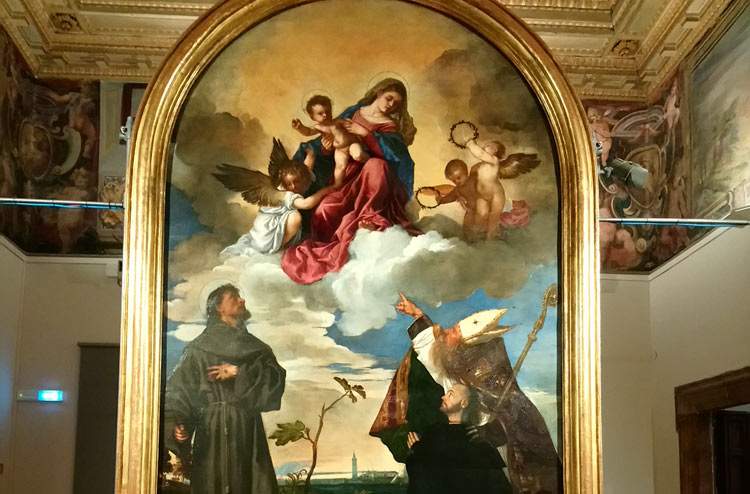 |
| Ancona, Titian's Gozzi Altarpiece turns 500 years old. The city launches an enhancement program |
Warning: the translation into English of the original Italian article was created using automatic tools. We undertake to review all articles, but we do not guarantee the total absence of inaccuracies in the translation due to the program. You can find the original by clicking on the ITA button. If you find any mistake,please contact us.